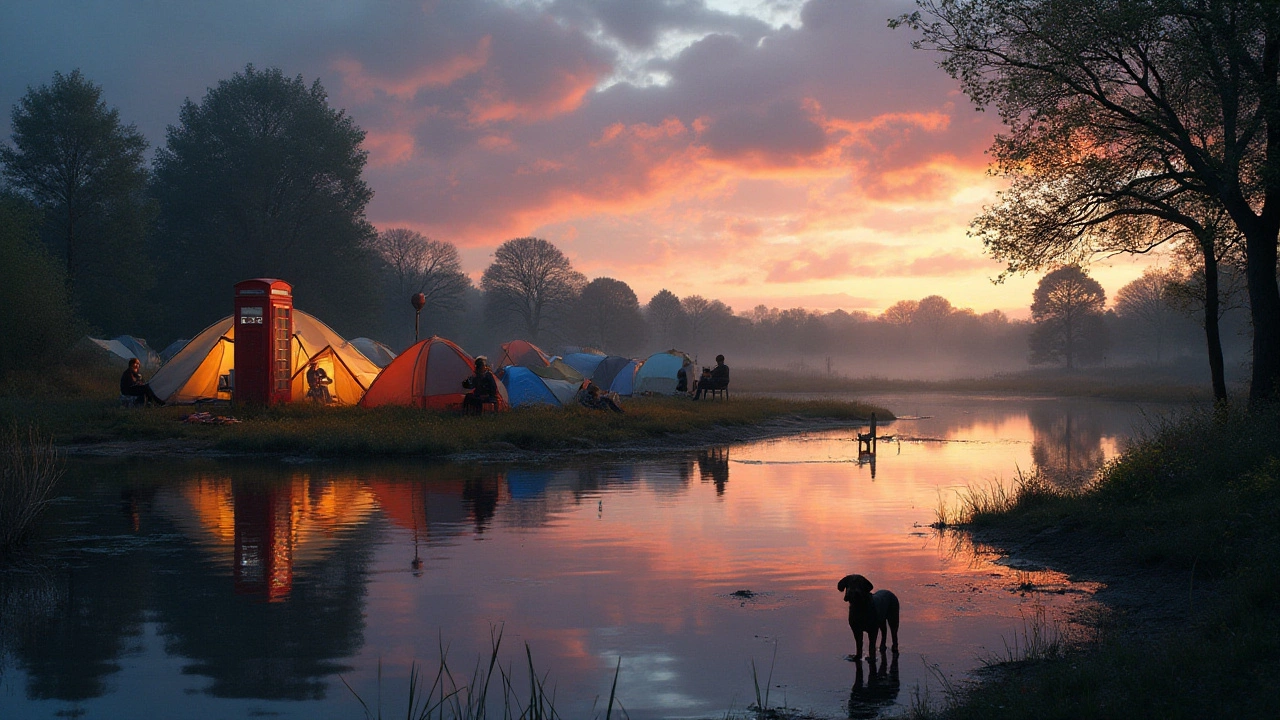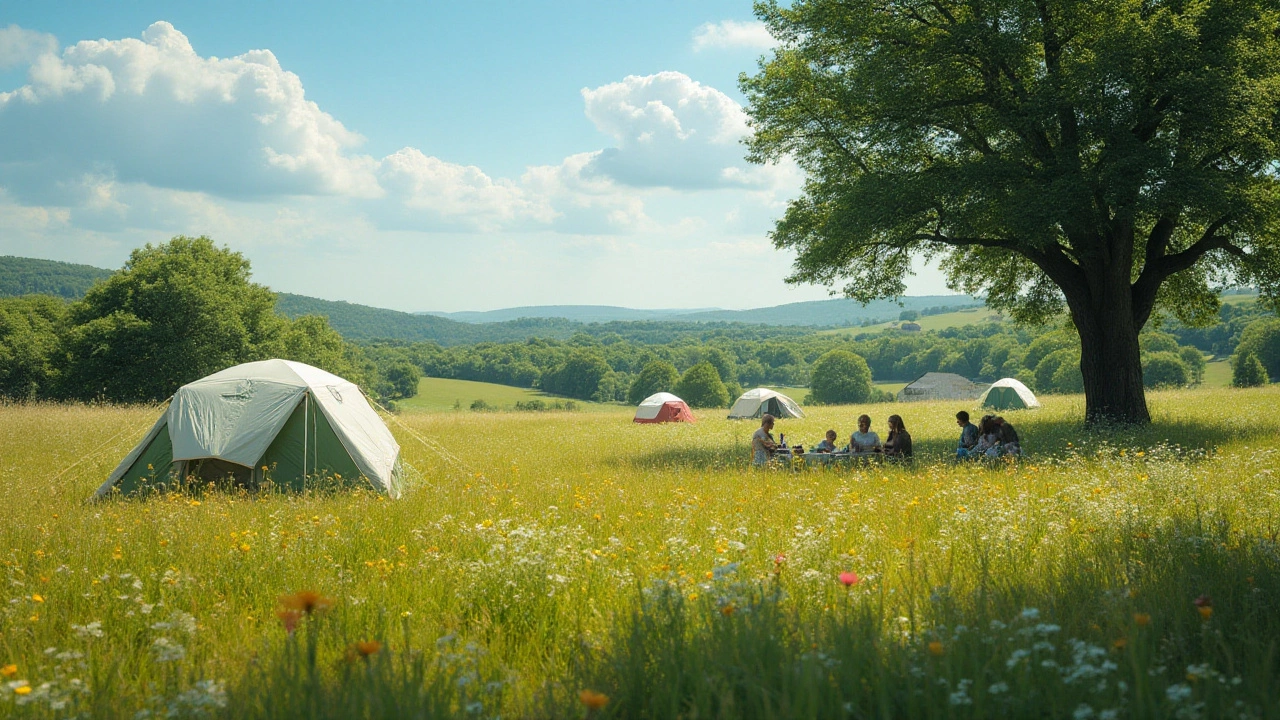The allure of camping lies in its simplicity—pitching a tent under the stars, away from the bustle of daily life. In the UK, adventurous campers are given a fascinating little loophole known as the 28-day rule. It's something that could change how you plan your next outdoor trip.
By allowing landowners to operate temporary sites without needing planning permission, the 28-day rule opens doors to a world of hidden gems and secluded retreats. But what does this regulation truly entail, and how can campers make the most of it? Dive into this guide and uncover the secrets of the 28-day rule for campers across the UK.
- Origins and Purpose of the Rule
- How the 28-Day Rule Works
- Benefits for Campers
- Potential Drawbacks
- Tips for Finding Temporary Campsites
- Future of the 28-Day Camping Rule
Origins and Purpose of the Rule
The 28-day rule in the UK is a fascinating regulatory quirk that traces its roots back to the Town and Country Planning Act 1947. This historic piece of legislation was designed to manage land use and planning across post-war Britain, a period when the landscape was dramatically evolving. At its core, the 28-day rule allows landowners to utilize their land for temporary purposes, such as camping, without needing formal planning permission. This flexibility was critical in addressing issues such as housing shortages and the need for adaptable land use strategies during that era. As a result, it enabled rural landowners to generate income and provided urban dwellers with much-needed recreational spaces.
The purpose of this rule was to facilitate land use experimentation and support rural economies by allowing activities that wouldn't be practical or economically viable otherwise. Its key feature is that landowners can host temporary activities, including campsites, for up to 28 days in a calendar year without a planning application. This measure sought to encourage innovative solutions for land utilization while balancing the need for controlled land development. For campers, this translates into the possibility of discovering new and often unique camping locations that may not have existed if not for this supportive rule. Agricultural shows, village fairs, and pop-up campsites have all flourished under this flexibility, offering people new spaces to explore and enjoy.
While the rule provides a fair degree of autonomy, it doesn't mean it's without guidelines. Interestingly, local authorities can decide to suspend or modify the rule in certain situations, especially if there's potential for disruption or environmental impact. As noted by The Camping and Caravanning Club, this rare balance between development and preservation is crucial in ensuring both campers and landowners can benefit without jeopardizing the local community or natural environment:
"The 28-day rule offers a wonderful blend of freedom and responsibility, allowing us to enjoy the countryside with minimal bureaucracy while ensuring our natural treasures remain protected for future generations."This sentiment is why the rule still resonates across the UK, underscoring the importance of responsible land use while preserving the spirit of adventure and exploration inherent in camping.
How the 28-Day Rule Works
Imagine the freedom of stumbling onto a patch of scenic countryside and discovering it's a pop-up campsite thanks to the 28-day rule. At its core, this regulation in the UK allows landowners to use their land as a temporary campsite for up to 28 days in a calendar year without having to seek planning permission. This not only encourages campers to explore more unique spots but also helps farmers and landowners diversify their income without a lengthy and expensive approval process. Many cherish this rule, as it offers spontaneity and flexibility in the camping experience.
The technicalities are straightforward in theory: a landowner decides to open their land for campers and is free to do so for any 28 days of the year. Historically, this rule was meant to promote rural tourism and make use of underutilized land areas. However, monitoring those 28 days is crucial, as exceeding this limit could lead to legal complications involving planning authorities. With the increase in staycations and local tourism over recent years, the popularity and application of this rule have seen a significant rise.
Interestingly, backend management often remains invisible to the average camper. Most temporary campsite operators meticulously plan which days they will be open to balance income potential and stay within the legal framework. A landowner might choose to open their site during a local festival or a busy summer weekend when demand is particularly high. This strategic planning benefits campers who are looking for a last-minute spot and landowners keen on maximizing usage within those 28 days. According to a spokesperson from the British Camping and Caravanning Club, "The 28-day rule has opened up a myriad of opportunities both for exploration and local investment, encouraging responsible and sustainable tourism."
That said, as a potential visitor, it's always wise to verify the status of a site. Some may operate on word of mouth or local advertising without a formal online presence, relying on the charm of 'discoverability'. Handy technology, like GPS and social apps, can help adventurers find some of these temporary spots—and many campers revel in the charm and challenge of discovering new locations this way. Landowners appreciate when campers respect their site, as this mutual respect ensures the future of the 28-day rule and its benefits for both parties.

Benefits for Campers
The UK’s 28-day rule isn't just a win for landowners; it opens up a realm of possibilities for campers searching for fresh trails and serene landscapes. For the avid camper, this regulation offers the promise of endless exploration without the need to revisit the same old spots time and again. The beauty lies in discovering new grounds, often nestled in lesser-known corners of the countryside, offering seclusion and a deeper connection with nature. This rule effectively widens the camping map, making every trip a potential gateway to uncharted adventures where the horizon feels as close as it can get.
Another key advantage for campers is the flexibility and spontaneity the rule affords. Unlike traditional campsites that might require advance bookings, temporary campsites adhering to the 28-day rule can be more adaptable to sudden weather changes or spur-of-the-moment plans. This means that campers can seek the perfect weekend retreat based on a whim or follow the sunshine to a new destination without being tied down by rigid booking schedules. An impromptu adventure becomes less stressful and more about seizing the moment.
For those interested in variety, temporary sites often offer diverse environments and landscapes that permanent sites might lack. Be it an open field under an expansive sky, a forested nook alive with rustling leaves, or a quiet riverside spot where you can watch the reflection of the moon dance on the water, each temporary site delivers a unique backdrop. This variety also attracts those looking to combine camping with other outdoor activities such as hiking, kayaking, or bird watching, allowing for a richer and more fulfilling camping experience.
"The 28-day rule is a game-changer in the camping world, offering unparalleled flexibility for both campers and landowners," stated John Stapleton, founder of the UK Camping Association.
Emerging from this is also an additional economic benefit. Many of these temporary sites are run by locals, sometimes associated with farm stays or small rural communities keen to share their part of the world with visitors. Camping at these sites enables travelers to contribute directly to the local economy, supporting small businesses and gaining a taste of local culture and hospitality. It's a mutually beneficial experience where campers gain access to immerse themselves in local traditions, cuisines, and landscapes while helping sustain the people who manage these lands.
Lastly, the 28-day rule gives rise to a more eco-friendly approach to traveling. Temporary campsites typically operate with minimal impact on the environment given their short-lived nature. Without significant permanent infrastructure, they maintain low footprints, and many are committed to practices that sustain their natural environments. By choosing these locations, campers make a conscious choice to support sustainable tourism, promoting practices that keep pristine areas untouched and minimize waste and disruption to wildlife.
Potential Drawbacks
While the idea of setting up camp in hidden nooks across the UK is undoubtedly enticing, the 28-day rule is not without its snags. One of the most significant issues for campers is the unpredictability of the facilities on these temporary sites. Often, the amenities might be far from what you'd expect on a traditional campsite. Facilities like toilets, showers, or proper waste disposal systems might be absent, leading to a less comfortable experience, especially for those who prefer a bit of convenience while enjoying nature.
An additional challenge is the lack of information and reviews on these temporary campsites. Since they pop up and disappear within a limited timeframe, gathering reliable feedback becomes a tall order. Many times, campers rely on word-of-mouth or local know-how, which can be hit or miss. Moreover, these sites can quickly become overcrowded, especially during popular vacation periods, as they aren't subject to the same booking systems as established campsites.
"Unexpected popularity of some temporary sites, owing to their adventurous appeal, can lead to overcrowding and impact the natural environment negatively," says Richard Mullin, an outdoor enthusiast and blogger.
Furthermore, there's a growing concern about the environmental impact of these temporary sites. With the influx of campers, maintaining sustainability becomes a daunting task. Without strict regulations, there's the risk of damaging local ecosystems. Though most campers are respectful of nature, the absence of enforcement can sometimes lead to irresponsible behavior like littering or improper waste disposal, which might not only harm the environment but also anger local residents or landowners.
For landowners, while the 28-day rule opens up an opportunity to earn a bit of extra income, it also poses its own set of financial and legal challenges. Insurance costs, liability for accidents, and the responsibility of maintaining a safe environment can deter landowners from participating. Coupled with the possible disturbances to neighbors and wildlife, the drawbacks can outweigh the benefits for some.
Lastly, and perhaps most crucially, there's a looming uncertainty due to potential future changes in legislation. While the rule currently allows a good deal of flexibility, there's always the risk that increasing popularity and environmental concerns could spur tighter regulations or changes to the rule itself. This unpredictability makes long-term planning for both campers and landowners a bit precarious. Being informed and keeping abreast of any legal updates becomes essential for those looking to explore or run temporary campsites.

Tips for Finding Temporary Campsites
Embarking on a camping adventure under the UK's unique 28-day rule can seem daunting at first, but once you have a handle on it, a plethora of opportunities opens up. Finding these elusive temporary campsites is not just about luck. It requires a blend of old-fashioned exploration and modern research. Start by leveraging local knowledge; often the best camping spots are known by the local communities. Chat with local shops, pubs, and tourism offices—they usually have insights into where to find stunning, off-the-beaten-path sites that adhere to the 28-day ruling. This method not only gets you valuable information but also connects you to the heart of the area's community.
While face-to-face chit-chat is invaluable, don't shy away from utilizing online resources. Websites dedicated to camping in the UK frequently update comprehensive lists of available temporary campsites. Websites like PitchUp.com and UKCampsite.co.uk allow campers to filter searches specifically for temporary or pop-up sites. Joining camping forums can also be beneficial, where you might stumble upon discussions about hidden gems discovered by fellow campers. Pay attention to social media groups focused on camping; they are vibrant communities that share experiences in real-time, often leading to unexpected discoveries.
Adding a layer of strategy to your hunt for campsites is by planning around popular events. During festivals or major local events, there is usually an upsurge in temporary camping sites being set up under the 28-day rule. Often, landowners see the influx of visitors as a chance to offer their land as a fleeting campsite, providing a cost-effective and convenient stay. Not only do you get a spot to camp, but you can also immerse yourself in the cultural vibrancy of these events. Just be sure to check whether these temporary sites have the basic amenities you require, as they differ vastly in what they offer.
Deciphering weather patterns plays a crucial role too. Given the UK's unpredictable climate, camping during drier months could expand your choices. Many landowners prefer to open their fields in summer, avoiding the spring rains that can make ground conditions unfavorable for camping. Studying long-range weather forecasts can help you plan ahead, ensuring you and your gear remain dry. And don't forget to check the land's elevation—higher ground can sometimes be drier and offer stunning views.
It's essential to remain respectful and responsible too. Striking a balance between adventure and environmental responsibility is essential. Follow the principle of 'Leave No Trace'—meaning you should clean up after yourself, make minimal noise, and disturb the natural environment as little as possible. Many UK campsites under this rule depend on word-of-mouth, and leaving a positive impression ensures these gems remain accessible for future campers. Some areas might also be designated as conservation spots, so double-check restrictions or guidelines set by local councils or landowners.
Lastly, flexibility is your best ally. Sometimes, spontaneous decisions lead to discovering breathtaking spots you hadn't planned on. Keeping a flexible itinerary allows you to change plans based on weather, local advice, or availability. The joy of camping under the 28-day rule often lies in the unexpected—a serene woodland spot, a quiet hilltop with breathtaking sunsets, or a secluded riverbank to call your own, if only for a night or two.
Future of the 28-Day Camping Rule
The vibrant tapestry of camping culture in the UK has, for years, been interwoven with the allure of the 28-day rule. As more intrepid campers set their sights on lesser-known corners of the countryside, the importance of this rule continues to rise. Its continuation is integral to maintaining the balance between adventure and regulation, but certain shifts in environmental awareness and policy could influence its trajectory.
Looking into the crystal ball of camping in the UK, the future of the 28-day rule appears to pivot on several factors. Conservationists and policymakers may revisit this regulation, considering the delicate dance between land use and ecological preservation. With increased ecological consciousness, there may be calls for tightening the rule to ensure that the natural beauty of campsites remains undisturbed. As more people flock to these temporary havens, stress on the environment tends to increase, and therefore responsible camping practices become critical.
From an economic standpoint, the rule offers an intriguing opportunity for rural economies. Temporary campsites under the 28-day umbrella provide local businesses with a seasonal boost. Communities may lobby to extend or adjust these allowances, allowing for more flexible economic growth strategies. On one hand, there's the potential for injecting life into these communities, yet there remains a need to avoid overt commercialization that might erode the charm and authenticity of the camping experience.
"A sustainable future for camping lies in responsible development and environmental stewardship," says Laura James, head of The British Camping Society.
On a broader regulatory horizon, discussions have emerged around potentially incorporating digital technologies to streamline campsite management under the rule. As it stands, the simplicity of the regulation is one of its appeals, yet integrating apps for campers to check site availability and suitability may enhance its functionality. The interplay of technology and tradition might redefine how campers interact with landowners and the approval processes involved.
As we consider future adaptations, we must also contemplate the voices of campers and landowners alike. Their experiences, feedback, and needs will likely play a crucial role in sculpting the way the 28-day regulation evolves. Engaging these stakeholders in meaningful dialogue could yield strategies that preserve the essence of camping while accommodating modern needs. The embodiment of the rule's spirit lies in its flexibility, and whatever changes are on the horizon, they ought to honor this foundational characteristic.
The rule's future is as boundless as the horizons before each camper’s sunrise. It beckons policymakers, conservationists, landowners, and campers to collaborate, ensuring that this treasured regulation remains fit for purpose amidst the changing dynamics of both nature and society. For anyone with a heart for the open skies and the quiet rustling of leaves, the importance of the 28-day rule persists as an enabler of adventures yet to be undertaken.
